Tips for Creating Social Media Influencer Campaigns
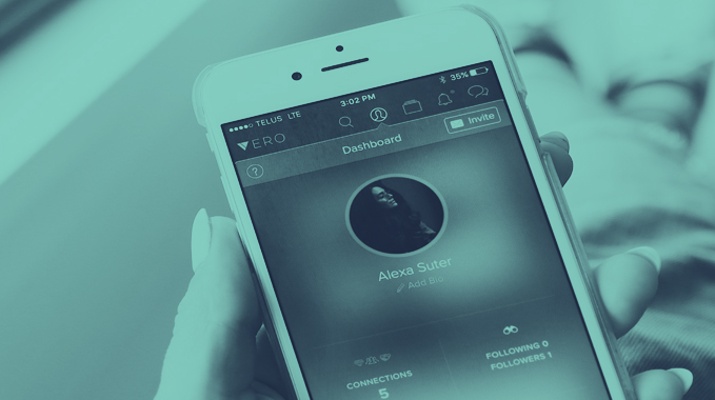
Tips for Creating Social Media Influencer Campaigns
A guide to finding and hiring social media influencers that are a good fit for your brand.
One of the most powerful ways to promote your brand is through social media influencers.
Influencers are people who’ve built a social media following and earned credibility with their fans. Brands hire them to persuade their audience to buy their products, and this kind of promotion is often as effective as personal recommendations from friends.
Before you get excited about influencers with massive followings, it’s helpful to know that a Launchmetrics survey found:
- Influencers with smaller followings have higher click-through rates.
- When a person’s following becomes too big, the influencer begins to lose their influence over the buying decisions of regular people.
We’ll show you the three different levels of social media influencers – micro-influencers, macro-influencers, and mega-influencers.
Micro-influencers have around 500 - 10,000 fans, macro-influencers have between 10,000 - 1 million fans, and mega-influencers have over 1 million fans. In this article, you’ll learn:
- How each level of influencer typically promotes brands.
- What engagement to expect from each level of influencer.
- How to find and contact each level of influencer.
We’ll explore them one at a time, beginning with the smallest.
Micro Influencers Have Small Followings and Big Impact
Micro-influencers are regular people who have between 500 - 10,000 followers. They’re a great marketing avenue for small businesses because they’re more affordable and have higher engagement rates than macro- and mega-influencers.
Most micro-influencers charge less than $250 per post and some are willing to promote in exchange for a free product.
Pairing your brand with the right micro-influencer can be a powerful way to boost sales and audience engagement.
These type of influencers usually make their own decisions about how they’ll recommend your product or service. They use their own style and creativity to promote your brand in a way that’s a natural fit for them and organic to their audience.
How to Find Micro-Influencers
To find micro-influencers, begin by checking out your own social media followers. Do you have any influencers that are already fans of yours? If so, these are the best people to consider approaching to represent your brand because they’re already fans.
If you don’t have any micro-influencers following you, then you can find a potential match with a bit of research.
Researching and finding the right micro-influencers can be a time-consuming process if you do it manually. The best way to find the right person is by using an influencer tool like HYPR.
For example, I chose to search HYPR for fitness influencers in the 33 to 39-year-old age range. I refined my search to micro-influencers by choosing search parameters for a total Facebook following of 1,000 - 10,000 fans.
My results offered a huge selection of influencers to choose from.
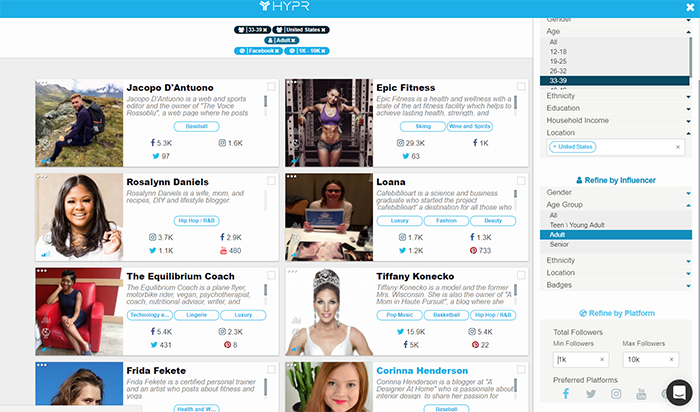
When I select an influencer from the search results, I’m able to view a full profile that includes social analytics and a blog or website link. In this case, I chose Rosalynn Daniels.
I discovered that her Facebook page has 2.9K followers and she has an impressive engagement rate of 100%.
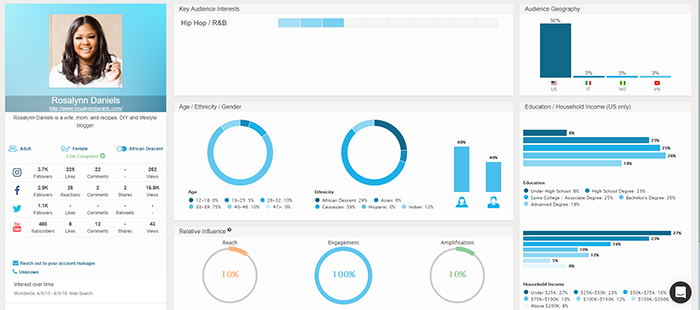
Her Facebook account is linked directly from her profile. Once I arrive at her Facebook page, I see that Rosalynn recently partnered with Craft Box Girls for a Facebook “Takeover” promotion.
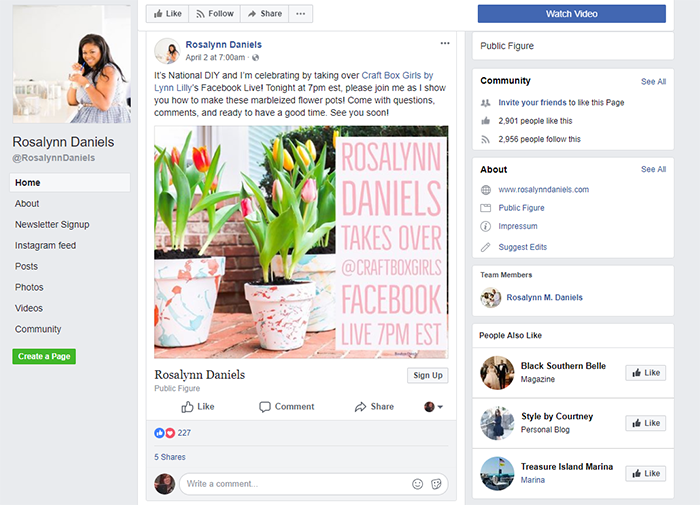
Rosalynn would be a perfect match for crafting or cooking brands looking for a micro-influencer if her personality matches the demographics of their audience.
Social influencer tools like HYPR can be a great help in finding influencers that are a good fit for your brand.
How to Partner With a Micro-Influencer
Micro-influencers should be approached carefully because they’re real people whose primary goal is to offer authentic and honest recommendations to their followers.
Get to know them first by engaging with them on social media for a time.
When you’re ready to reach out, be friendly but direct and professional. Let them know why you feel they would be a good fit, what you’d like to accomplish, and how you are offering to compensate them.
Despite their smaller following, studies have proven that micro-influencers have more influence over their followers’ purchasing decisions than macro- and mega-influencers. That’s probably because micro-influencers tend to have more buying conversations, 87% of which take place in person.
Macro-Influencers Are Well-Known People with Influence in Specific Industries
Macro-influencers are well-known personalities that have a following of 10,000 – 1 million and are strongly tied to a specific industry. While their engagement rate of 5% - 25% isn’t as high as micro-influencers, the size of their following means they can often reach up to ten times more people.
These type of influencers can help your brand by offering more exposure and increasing the number of conversations surrounding your product.
You’ve probably seen quite a few influencer/brand partnerships on social media. The promotions can involve tactics like giveaways, brand placement, and social mentions.
The image below shows how Chef Marc promotes People Magazine on his Facebook page by adding an “Exclusive People” stamp atop an image of a tempting waffle breakfast.
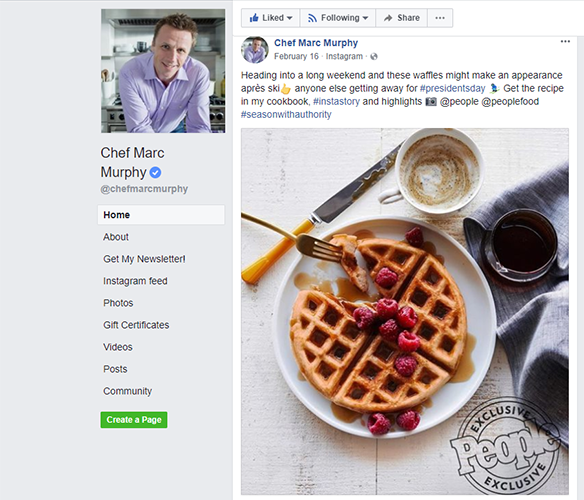
When working with a macro-influencer, companies usually have a choice in how the promotional message is delivered.
How to Find and Partner with A Macro-Influencer
While it’s possible to search manually or use the HYPR app to find macro-influencers, it may not be the best approach to finding the right person.
One piece of influencer content typically costs between $2,000 - $50,000, but success and profits aren’t guaranteed.
Limit your risk by using a PR or social influencer marketing agency to help you find the right influencer and create a successful campaign.
For example, Socialyte Agency has a large roster of influencers. They help clients find the right person, partner with him or her, and create an effective social media influencer campaign.
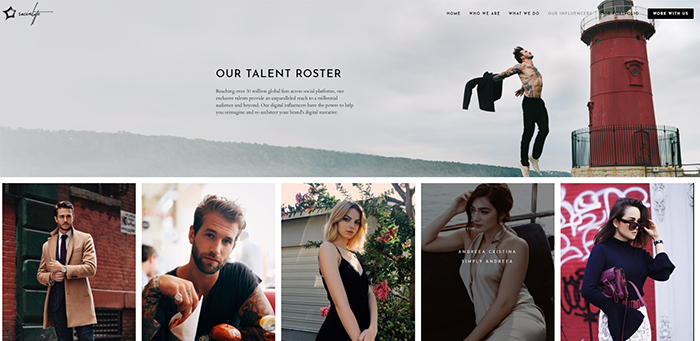
Partnering with a macro-influencer can be a positive step toward the success of your brand. Limit the risks by hiring professionals to help you navigate your way to profitable macro-influencer promotions.
Mega Influencers Have Massive but Less-Engaged Audiences
Mega-influencers are celebrities with a following of over 1 million people.
Mega-influencers can offer your brand the chance to reach a massive audience, but they come with a massive price tag and high risk.
Mega-influencer fan bases are often less connected to the influencer than micro- and macro-influencers, and therefore less likely to engage. Their click-through rates are about 2% to 5%.
Brand partnerships with mega-influencers are best for global enterprise corporations.
A well-done mega-influencer campaign can deliver very high results since their fan base is so large.
One example of a mega-influencer/media partnership is race car driver Danica Patrick’s collaboration with GoDaddy. Her fans are a perfect fit for GoDaddy’s offbeat personality.
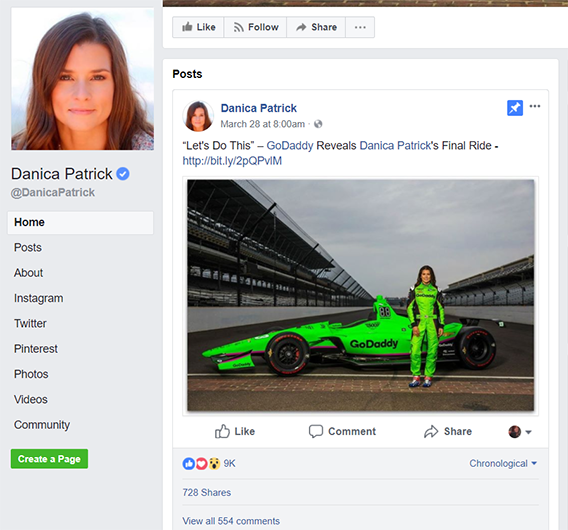
For those corporations willing to take on the risks, mega-influencers’ reach can be huge and they can offer a serious boost of brand awareness. These type of campaigns are always handled through PR and communications agencies.
Social Media Influencer Campaigns Can Be a Highly Effective Way to Promote Your Brand
Influencer campaigns are more than just a popular trend. Studies show that 92% of consumers turn to people they know before any other source of product recommendations.
Whether you choose a micro-, macro-, or mega-influencer, the priority will always be finding the right influencer for your demographic and brand personality. Over 40% of professionals say their PR and communications teams are the ones responsible for influencer relationship management.
People trust other people’s recommendations more than they trust advertising, even if those people are influencers.
Follow the steps outlined above to begin exploring social media influencer campaigns for your brand.
